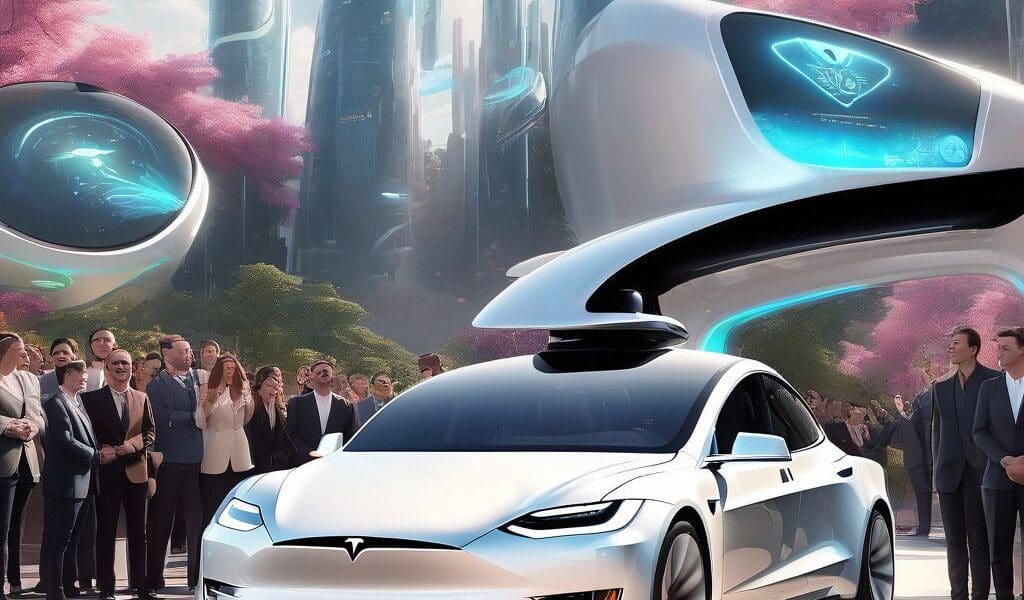Tesla's Cybercab: The Future of Autonomous Mobility
Elon Musk has recently unveiled an ambitious vision for the future of transportation with the introduction of Tesla’s latest creation—the Cybercab. This robotaxi is not merely a new model; it represents a pivotal shift in Tesla’s strategy towards autonomous driving. Set to sell for under $30,000, the Cybercab is designed to be an accessible option in the world of robotic vehicles, with an anticipated release date of 2026.
The Cybercab features an innovative design, eschewing traditional elements such as steering wheels and pedals. Instead, its gull-wing doors and compact structure signify a clear departure from conventional automobile design. By eliminating these components, Musk emphasizes the vehicle’s focus on a fully autonomous driving experience, which could transform urban travel.
Advancements in Autonomous Technology
Central to Tesla’s strategy is the reliance on artificial intelligence and camera-based technology, a move that sets it apart from many competitors who utilize lidar technology. This decision raises pertinent questions about the efficacy and safety of their approach. While Musk asserts that such advancements will enhance road safety dramatically, achieving this goal requires overcoming significant technical hurdles and regulatory challenges.
According to Musk, Tesla’s self-driving technology could reduce accidents on the road by tenfold. However, critics remain skeptical of such bold claims, pointing out the substantial risks associated with autonomous driving. Previous delays in Tesla’s timelines further fuel doubts regarding the feasibility of bringing the Cybercab to market on schedule.
Expanding the Fleet: The Robovan
In addition to the Cybercab, Musk introduced a robovan capable of transporting up to 20 passengers. This vehicle aims to address the growing demand for larger, shared transport options as urban populations swell. By integrating a larger capacity into their lineup, Tesla positions itself to compete effectively in the public transportation sector, particularly in densely populated cities.
The Competitive Landscape
Tesla’s foray into the robotaxi market is notable given the heightened competition it now faces. Rivals include established companies and innovative startups focused on autonomous transport solutions. Tesla must not only refine its technology but also meet the expectations of a market eager for quick deployment of effective self-driving vehicles.
Safety and regulatory compliance remain critical hurdles for Musk’s vision. As metrics and benchmarks for autonomous safety evolve, Tesla needs to ensure that its technology can adapt and meet these new requirements. The launch of the Cybercab invites scrutiny not only from regulators but also from consumers who may resist the transition to fully autonomous vehicles given past incidents related to self-driving technology.
Future Prospects: The Optimus Robot
Musk’s broader vision extends beyond the Cybercab and includes advancements in Tesla’s humanoid robot, Optimus. This robot is designed to perform various household tasks and is projected to cost between $20,000 to $30,000. As Tesla diversifies its portfolio further, it underscores the interconnectivity of its innovations—linking transportation advancements with the future of work and daily living.
Conclusion: The Road Ahead
The unveiling of the Cybercab represents a crucial milestone in Tesla’s strategy for autonomous vehicles. While the ambitions are grand and the potential market impact significant, the successful realization of this vision hinges on addressing safety concerns, navigating regulatory landscapes, and staying ahead in a competitive market. As the journey towards autonomous mobility progresses, stakeholders—ranging from consumers to regulators—will be keenly observing how Tesla manages the complexities of its innovative pursuits.
The road to 2026 will be a test of Tesla’s resolve and ability to deliver on its promises in the ever-competitive landscape of autonomous technologies.








